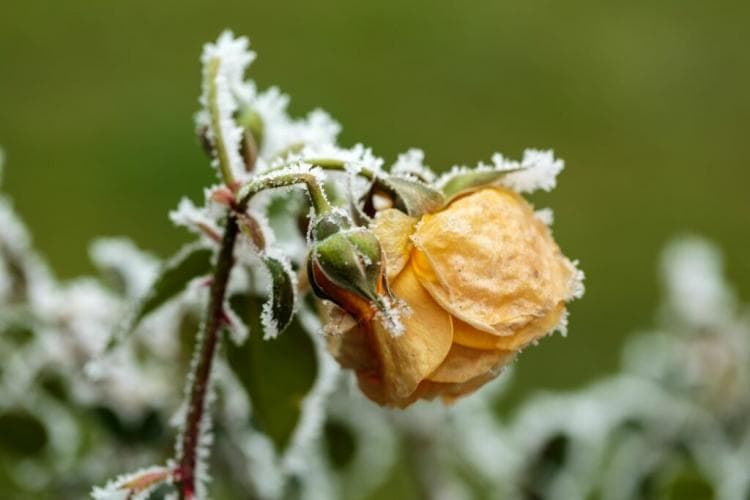Wintering Roses: Expert Tips For Wintering In Pots And Beds
The fragile rose needs special protection in the cold season. Here you can find out how to successfully overwinter your roses in beds and pots.
Roses ( Rosa ) do best in areas with warmer climates. In rougher areas, special winter protection measures may therefore be necessary so that your rose can survive the cold months well. Above all, you should protect the sensitive grafting point and the shoot base with the buds for the coming growing season from cold temperatures and winter sun. In this article, we will explain the best way to go about wintering your roses.
Hibernate roses
Table of Contents
When do my roses get too cold without protection? How do I go about wintering outdoors and what should I watch out for with potted roses? We have summarized the answers to these questions for you below.
When do the roses get too cold?
Most rose varieties are not frost-hardy, which is why you should think about suitable protective measures early enough. However, it is best to let the rose shoots mature and only apply winter protection when a period of frost is in prospect.
Hibernate roses in the bed
First, remove old inflorescences and leaves. In addition, you should remove the fallen leaves on the ground to prevent fungal diseases. Then pile the rose about 20 cm high with soil, so that about three to four eyes are covered. You should only prune your rose in spring. You can also put pine green between the higher shoots that are still peeking out to offer them protection. The same applies to climbing roses, where the fir green can be stuck between the shoots along with the climbing aid.

Standard roses, on the other hand, need special frost protection. Again, first, remove the foliage from the crown and the ground. Then carefully bend young stems down. Make sure you pay attention to the direction of bending so that the trunk does not break. Then attach the trunk to the ground using hooks. The crown should lie flat and be covered with garden soil. Compost soil is not suitable for this, as otherwise, the crown will begin to rot over the winter. A sheathing made of straw or fir green provides additional protection for the finishing point.
Older standard roses do not have to be bent. It is best to wrap the crown in straw or pine green and put an air-permeable cover – for example, a jute sack or a fleece hood – over it. In addition, you can pile up the stem rose at the grafting point and, if necessary, attach suitable stem protection.
Summary to overwinter roses in the bed:
- Do not put on winter protection until a period of frost is imminent
- Remove old inflorescences and leaves
- Remove leaves from the ground
- Pile up about 20 cm high with soil
- Put the fir green between the shoots
Hibernate roses in a pot
With potted roses, additional protection of the roots is of great importance. As in the field, you should first pile up the rose in the pot or in the bucket to protect the grafting point. In addition, the rose bush can be covered with fir green. You can also add a crown pad to tall tree roses. Next, wrap the pot with jute sacks or bamboo mats and tie them tight. Be generous: the thicker the protective layer, the better the insulation from the cold.

So that the rose is also protected from the cold from below, we recommend that you place the pot on a wooden or styrofoam plate to avoid direct contact with the floor. Once you have selected a location that protects your rose from wind and weather, nothing stands in the way of successful wintering outside in the garden, on the balcony, or terrace. However, if the permafrost persists, it is advisable to bring the potted roses into the house and place them in an unheated room – for example in the cellar.
Summary to overwinter potted roses:
- Select protected location
- Remove flowers and leaves
- Pile up with earth
- Put the fir green between the shoots
- If necessary, attach crown pads
- Wrap the pot with insulation material
- Place on a styrofoam plate
- Bring inside in case of permafrost
Tip from the professional: Despite the dormant vegetation, you should make sure that the rose does not dry out completely over the winter when growing in pots. But only water on frost-free days so that the roots are not damaged.
Caring for roses after the winter
If no more severe frosts are to be expected, you can remove the fir green and the piled earth again at the end of March/beginning of April. You should then straighten tall trunks and remove crown pads if necessary. Then it is already time for the maintenance cut. In our special article, we will explain in detail how you can best proceed and what else you need to consider when caring for roses over the course of the year.
You might so like:






